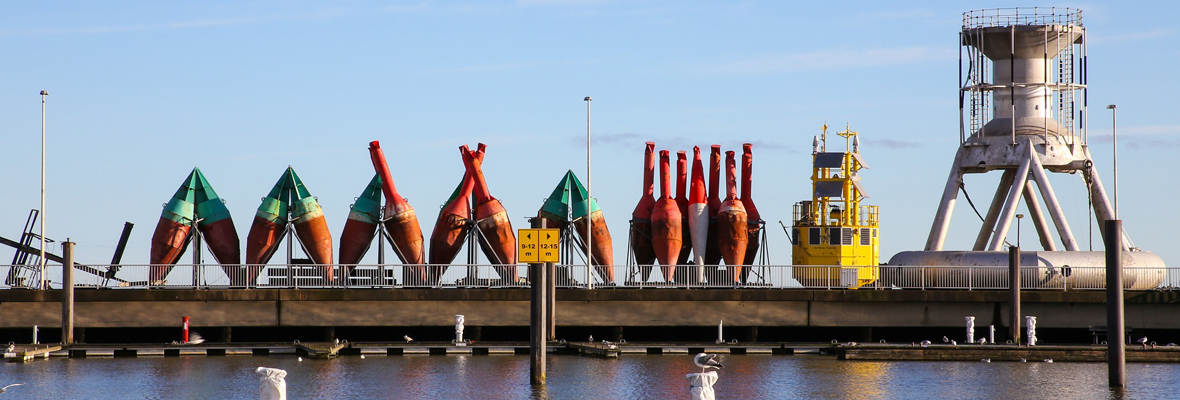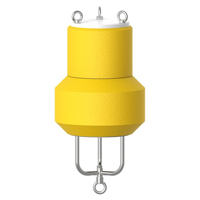Of course, any monitoring buoy with the right specs can provide data on water quality or weather. However, there are many ways to deploy monitoring buoys, and many situations that might benefit from the monitoring power this kind of platform brings.
In this post, we’ll briefly touch on some of the monitoring buoy basics. We’ll also look at three unique monitoring buoy applications, and how they extend into other areas.
Monitoring Buoy Basics
Monitoring buoys are simply data buoys used to monitor environmental or weather conditions or other data selected by the user. These buoys can be equipped with a broad range of sensors and other equipment, so what a monitoring buoy does genuinely depends on the application.
All monitoring buoys share certain basic characteristics, however. For example, a monitoring buoy must have sufficient buoyancy, space for instrumentation, a power source that works with its maintenance schedule and location, and telemetry options that allow its data to be used.
Listening For Whales
In 2016, scientists at the Woods Hole Oceanographic Institution (WHOI) deployed an unusual monitoring buoy: one that is tasked with listening for fin whales in the New York Bight.
Located about 22 miles south of Fire Island, the monitoring buoy was specially designed for its task. It is outfitted with an acoustic monitoring tool that can detect fin whale vocalizations for scientists. The monitoring buoy made its first whale detection less than two weeks after deployment, and since then has made multiple detections.
This is an unusual monitoring buoy application because it demanded the special development of software so the acoustic instrument could be integrated into the buoy system. The important project will help scientists advise policymakers and resource managers to guide things like marine route choices. Over time, the team hopes to be able to use the system to make detections of other species.
Members of the public can hear the detected whale sounds gathered by the monitoring buoy online here.
Warning Against Shark Attacks
In the wake of the first fatal shark attack in decades, Massachusetts authorities are working hard to keep sharks and humans sharing Cape Cod’s ecosystem harmoniously. Although monitoring buoys have already been used to watch for sharks in Massachusetts waters, now people are working to install the “Clever Buoy,” a shark buoy system from Australia.
This monitoring buoy system provides data that can be accessed in real-time, not just when lifeguards are on duty to see the signs the buoys are revealing. The “Clever Buoy” makes use of sonar to detect sharks, sending detections instantly to an app which triggers an alarm.
Fighting Back Against Vandalism
Data buoy vandalism is a serious problem. It places a significant financial burden on buoy operators, not to mention local, state, and national economies that rely on vital environmental and ocean data from monitoring buoys. Without that data, people lose a day of recreation or work, their home or other property in a storm, or worse.
Monitoring buoy operators have deployed various buoy designs intended to prevent or at least mitigate vandalism. For example, more robust materials or protective structures can sometimes be used.
However, these are at best imperfect solutions. Without drastically raising costs of operation and interfering with data collection, it’s not easy to protect a deployed monitoring buoy from any interference—especially when that interference isn’t accidental. Designs that prevent vandalism can also render a monitoring buoy system more difficult to maintain and operate.
Mooring design modifications are another avenue to pursue and worth fortifying. However, while there is no question that the toughest materials within the budget and the most stable mooring configuration should be used, this can’t prevent all vandalism to monitoring buoys.
Most vandalism prevention efforts surround education and outreach. Sustained efforts to provide education and outreach to the community have often proven successful for the National Weather Service (NWS), for example, especially among the general public. These efforts are helped by public access to the real-time data monitoring buoys provide, and other indicia that can show the public the value these monitoring stations offer every day.
However, for some kinds of vandalism—such as that caused by fishermen who cut buoy moorings to prevent the loss of their gear—regulatory measures such as monetary penalties may be needed. In these cases, a more thorough review of existing federal and state laws concerning monitoring buoy vandalism and rigorous prosecution of offenders may yield results. Furthermore, monitoring buoy operators may choose to support the push to classify monitoring buoys as Aids to Navigation (ATON)—a change that would mean stiffer penalties for vandals.
The Bottom Line
There are probably as many potential monitoring buoy applications as there are bodies of water, or more. If you have questions about getting more information from your marine or freshwater ecosystem, reach out to the NexSens team for answers and expert guidance.
Equipment
The X2-SDL Submersible Data Logger is a rugged, self-powered data logging system with optional cellular, satellite, or radio communications.
The CB-50 data buoy is designed for quick deployment in emergency response situations including industrial spills and natural disasters.
WQData LIVE is a web-based project management service that allows users 24/7 instant access to data collected from remote telemetry systems.





0 comments